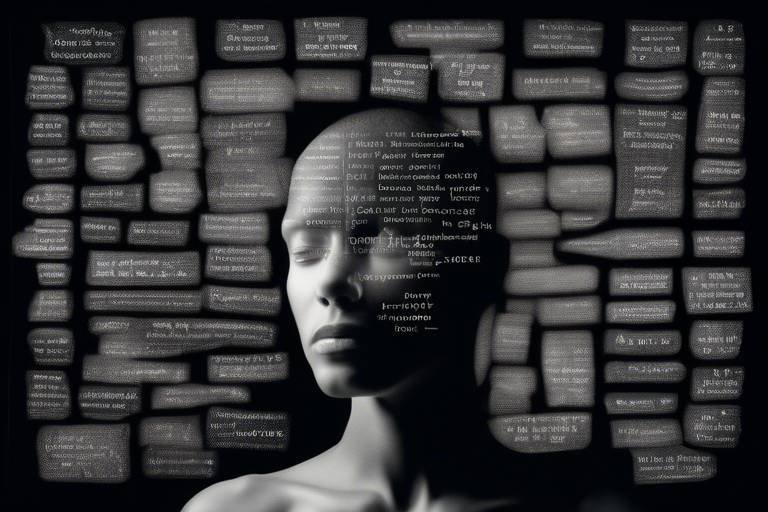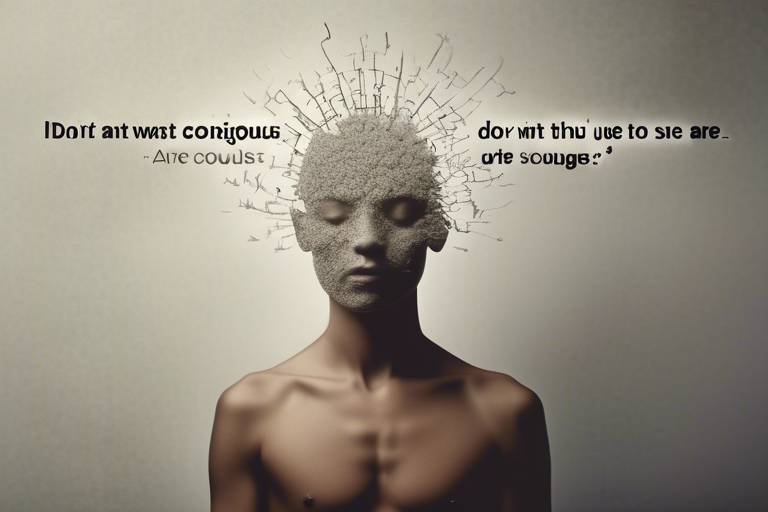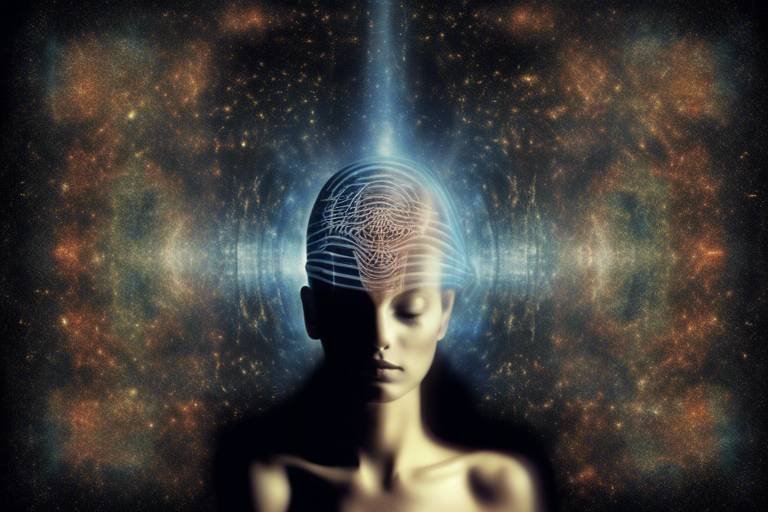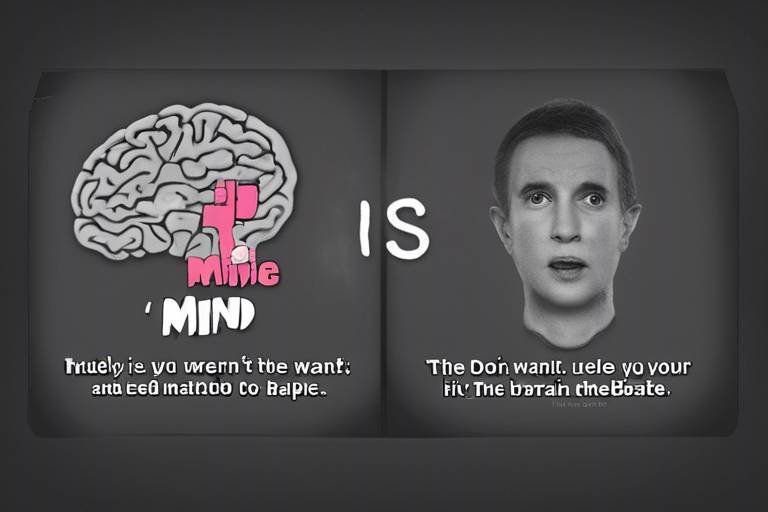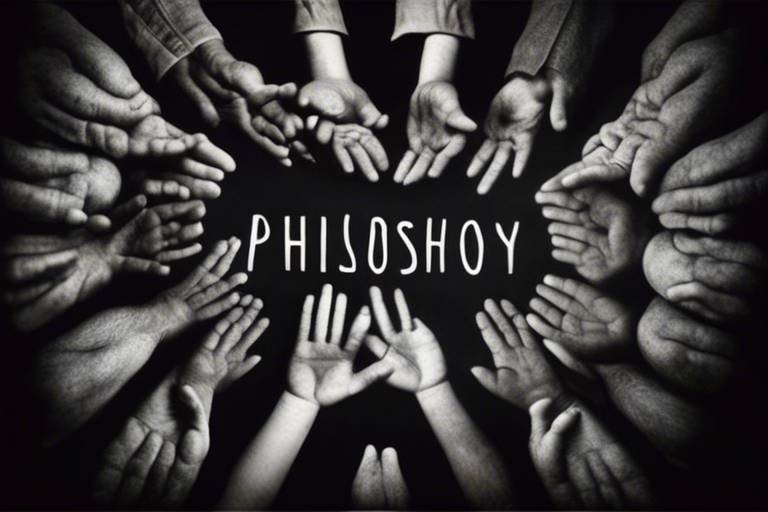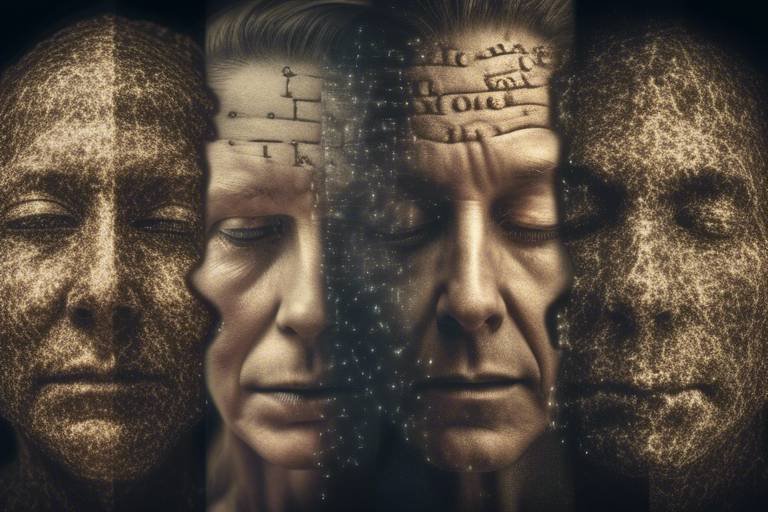Making Sense of Consciousness and Cognitive Science
Consciousness is a fascinating and complex topic that has intrigued scientists, philosophers, and curious minds for centuries. It is the very essence of our being, the internal narrative that shapes our perceptions and experiences. But what exactly is consciousness? How does it influence our thoughts, actions, and interactions with the world around us? In this article, we will explore the intricate relationship between consciousness and cognitive science, diving deep into various theories, research findings, and the implications of understanding the human mind and behavior.
At its core, consciousness can be described as our awareness of ourselves and our environment. It allows us to experience sensations, make decisions, and reflect on our thoughts. Yet, despite its fundamental role in our lives, consciousness remains one of the most perplexing subjects in science. It raises questions that challenge our understanding of reality. Are we merely biological machines, or is there something more profound at play? These questions set the stage for a rich exploration of consciousness through the lens of cognitive science.
Cognitive science, an interdisciplinary field that combines psychology, neuroscience, artificial intelligence, philosophy, linguistics, anthropology, and education, seeks to understand how the mind works. It investigates how we perceive, think, learn, and remember, and how these processes relate to consciousness. By merging insights from various disciplines, cognitive science aims to unravel the mysteries of the mind, providing a holistic view of human cognition.
As we delve deeper into the nature of consciousness, we will examine its definition, characteristics, and the philosophical perspectives that attempt to explain it. We will also review prominent theories such as Integrated Information Theory and Global Workspace Theory, highlighting their strengths and weaknesses. Each theory offers unique insights into the workings of consciousness, and understanding them is essential for grasping the broader implications of cognitive science.
Furthermore, we will explore how neuroscience plays a crucial role in understanding consciousness. By examining brain activity and its correlation with conscious experience, we can gain valuable insights into the mechanisms that underlie our awareness. Neuroimaging techniques, such as fMRI and EEG, have revolutionized our ability to visualize brain activity and understand how different regions contribute to conscious thought. Identifying the neural correlates of consciousness is essential for deciphering its complexities and advancing our knowledge of the human mind.
In this journey through the realms of consciousness and cognitive science, we will not only uncover fascinating theories and research but also reflect on the implications of our findings. How does understanding consciousness impact our view of ourselves and our place in the universe? What ethical considerations arise from advancements in cognitive science? These questions will guide our exploration, encouraging us to think critically about the implications of our understanding of consciousness.
- What is consciousness? Consciousness refers to our awareness of ourselves and our surroundings, encompassing thoughts, feelings, and perceptions.
- Why is consciousness important in cognitive science? Understanding consciousness helps researchers decipher how we think, learn, and interact with the world, providing insights into human behavior and cognition.
- What are the main theories of consciousness? Prominent theories include Integrated Information Theory, which focuses on information integration, and Global Workspace Theory, which emphasizes information sharing across cognitive processes.
- How does neuroscience contribute to our understanding of consciousness? Neuroscience investigates brain activity and its correlation with conscious experience, utilizing techniques like fMRI and EEG to explore the neural basis of consciousness.

The Nature of Consciousness
Consciousness, often described as the state of being aware of and able to think about one's own existence, thoughts, and surroundings, remains one of the most perplexing subjects in science. It's like trying to catch smoke with your bare hands—elusive and slippery. What exactly is consciousness? Is it merely a byproduct of brain activity, or does it hold a deeper significance? The quest to understand consciousness has intrigued philosophers, scientists, and curious minds alike for centuries.
At its core, consciousness encompasses several characteristics that make it unique. It is subjective, meaning it is experienced individually and cannot be fully understood by observing someone else's experience. Think of it like tasting a delicious piece of chocolate; no one can truly know how that experience feels for you. Additionally, consciousness is dynamic and can change from moment to moment, influenced by emotions, thoughts, and external stimuli. This fluidity adds another layer of complexity to our understanding.
Philosophically, consciousness has been debated in various schools of thought. Dualists, for instance, argue that consciousness exists independently of the physical brain, while materialists assert that it is entirely a product of neural processes. Then there are the functionalists, who suggest that consciousness should be understood in terms of its functional roles rather than its underlying substance. Each perspective offers valuable insights, yet none can fully encapsulate the essence of consciousness. It's akin to trying to describe a rainbow using only one color; you miss the beauty of the whole spectrum.
Moreover, the relationship between consciousness and cognitive science is a fascinating area of exploration. Cognitive science seeks to unravel the mysteries of the mind, and consciousness is a central pillar in this pursuit. Researchers are increasingly using interdisciplinary approaches, combining insights from psychology, neuroscience, and even artificial intelligence to shed light on how consciousness manifests and operates.
In summary, the nature of consciousness is a complex interplay of subjective experience, philosophical inquiry, and scientific investigation. As we delve deeper into this intricate web, we may uncover not only the mechanisms that underpin consciousness but also its profound implications for understanding what it means to be human. The journey is far from over, and with every question answered, new mysteries emerge, keeping the flame of curiosity alive.
- What is consciousness? Consciousness is the state of being aware of and able to think about one's own existence, thoughts, and surroundings.
- Why is consciousness difficult to study? Consciousness is subjective and dynamic, making it challenging to measure and analyze scientifically.
- What are the main theories of consciousness? Prominent theories include Integrated Information Theory and Global Workspace Theory, each offering unique perspectives on how consciousness arises.
- How does neuroscience contribute to our understanding of consciousness? Neuroscience investigates the relationship between brain activity and conscious experience, using techniques like fMRI and EEG to explore this connection.

Theories of Consciousness
When you think about consciousness, it’s like trying to capture smoke with your bare hands—elusive and often frustrating. Numerous theories have emerged over the years, each attempting to unravel the complexities of this profound aspect of human experience. These theories range from biological explanations to more abstract philosophical ideas, providing a rich tapestry of interpretations that help us understand what it means to be aware. Let’s dive into some of the most prominent theories that have shaped our understanding of consciousness.
One of the key frameworks in the discourse on consciousness is the Integrated Information Theory (IIT). This theory posits that consciousness corresponds to the level of information integration within a system. Imagine a symphony orchestra: the beauty of the music arises not just from the individual instruments, but from how well they harmonize together. Similarly, IIT suggests that the richness of conscious experience is tied to how information is interconnected within our minds. This theory provides a compelling way to think about consciousness, suggesting that the more integrated the information, the more conscious the experience.
On the flip side, we have the Global Workspace Theory (GWT), which presents a different angle on the matter. GWT likens consciousness to a stage in a theater where information is broadcasted for all to see. In this metaphor, various cognitive processes act as actors, and the conscious mind is the spotlight that highlights certain information while leaving the rest in the shadows. This theory emphasizes that consciousness serves as a global information-sharing platform, allowing us to access and utilize information in a way that influences our behavior and decision-making.
To truly appreciate these theories, it’s essential to recognize their strengths and weaknesses. For instance, while IIT offers a mathematical approach to understanding consciousness, it has faced criticism for being overly abstract and challenging to apply in practical scenarios. On the other hand, GWT has been praised for its intuitive appeal but questioned for its lack of specificity regarding the underlying neural mechanisms that facilitate this global sharing of information.
In addition to IIT and GWT, there are other intriguing perspectives worth mentioning. Higher-order theories suggest that consciousness arises from our ability to think about our thoughts. This self-referential aspect of consciousness can be likened to a mirror reflecting a mirror—an endless loop of awareness. Meanwhile, biological theories focus on the evolutionary advantages of consciousness, proposing that being aware of one’s surroundings enhances survival and adaptability.
As we navigate through these theories, it becomes clear that the quest to understand consciousness is far from over. Each theory contributes a unique lens through which we can examine our own experiences and behaviors. Whether we lean towards the mathematical elegance of Integrated Information Theory or the theatrical metaphor of Global Workspace Theory, one thing remains certain: consciousness is a fascinating frontier that continues to challenge and inspire both scientists and philosophers alike.
- What is consciousness? Consciousness refers to the state of being aware of and able to think about one’s own existence, thoughts, and surroundings.
- What are the main theories of consciousness? The main theories include Integrated Information Theory, Global Workspace Theory, and Higher-order theories, among others.
- Why is understanding consciousness important? Understanding consciousness can provide insights into human behavior, cognitive processes, and the nature of reality itself.

Integrated Information Theory
Integrated Information Theory (IIT) is a fascinating framework that seeks to unravel the enigma of consciousness by proposing that it is fundamentally linked to the way information is processed within a system. Imagine a complex web, where each strand represents a piece of information. The more interconnected these strands are, the richer the tapestry of consciousness becomes. Essentially, IIT posits that consciousness arises from the integration of information—meaning that the more interconnected and interdependent the components of a system are, the higher the level of consciousness. This theory was first introduced by neuroscientist Giulio Tononi and has sparked considerable interest and debate in both scientific and philosophical circles.
IIT is grounded in the idea that consciousness is not merely a byproduct of neural activity but a fundamental property of certain systems. The theory introduces a measure known as phi (Φ), which quantifies the degree of integration of information. A higher phi value indicates a higher level of consciousness. This concept challenges traditional views that see consciousness as a binary state—either present or absent—by suggesting that it exists on a spectrum. As such, different systems, from human brains to artificial intelligence, could possess varying degrees of consciousness depending on their information integration capabilities.
To illustrate the implications of IIT, consider the following examples of systems with different levels of consciousness:
| System | Information Integration (Φ) | Consciousness Level |
|---|---|---|
| Human Brain | High | Full Consciousness |
| Animal Brain (e.g., Dog) | Moderate | Partial Consciousness |
| Artificial Neural Network | Low | Minimal Consciousness |
Despite its innovative approach, Integrated Information Theory is not without its controversies. Critics argue that measuring integrated information can be highly complex and may not capture the full essence of consciousness. Some skeptics question whether the phi value can truly represent the qualitative aspects of conscious experience. Others propose alternative theories that emphasize different elements of consciousness, such as the role of attention or the importance of sensory input.
Nevertheless, IIT has opened new avenues for research and discussion. It invites us to consider profound questions about the nature of consciousness and its relationship with information processing. As we continue to explore the depths of the human mind, Integrated Information Theory serves as a compelling lens through which we can examine the intricate web of consciousness.

Measuring Integrated Information
Measuring integrated information is a complex endeavor that requires a solid understanding of both the theoretical frameworks and the mathematical tools involved. At its core, the concept of integrated information theory (IIT) suggests that consciousness arises from the way information is processed and integrated within a system. But how do we actually quantify this integration? The answer lies in several sophisticated methodologies that have been developed over the years.
One of the primary measures used in this context is known as Phi (Φ), a value that represents the degree of integration of information in a system. The higher the Phi value, the greater the level of consciousness that the system is believed to possess. This brings us to the question: how do researchers calculate Phi? It involves a series of steps that include:
- Defining the system: Identifying the components that make up the system, such as neurons in a brain network.
- Mapping the interactions: Understanding how these components interact with one another and the flow of information between them.
- Applying mathematical models: Using advanced mathematical frameworks to analyze the interactions and compute the Phi value.
This process is not just a mere exercise in mathematics; it has profound implications for cognitive science. By quantifying integrated information, researchers can begin to understand not only the nature of consciousness but also how it varies across different states, such as wakefulness, sleep, or anesthesia. For example, studies have shown that when a person is in a deep sleep state, their Phi value significantly decreases, suggesting a lower level of consciousness compared to when they are awake and alert.
However, measuring integrated information is not without its challenges. Critics of IIT argue that the assumptions underlying Phi may not adequately capture the full complexity of conscious experience. For instance, some researchers believe that the mathematical models used may oversimplify the intricate dynamics of neural networks. Others point out that the relationship between Phi and subjective experience is still not fully understood. This ongoing debate highlights the need for further research and refinement of measurement techniques.
In addition, alternative approaches have emerged that aim to complement or challenge the Integrated Information Theory. These include methods that focus on the neural correlates of consciousness, which seek to identify specific brain regions and networks that are active during conscious experiences. As cognitive science continues to evolve, the quest to accurately measure integrated information remains a critical and fascinating area of study.
In summary, measuring integrated information is a multi-faceted process that combines theoretical insights with practical methodologies. As researchers strive to decode the mysteries of consciousness, the ability to quantify integrated information will play a pivotal role in advancing our understanding of the human mind.
- What is Integrated Information Theory?
Integrated Information Theory is a framework that proposes consciousness corresponds to the level of information integration within a system. - How is Phi calculated?
Phi is calculated by defining the system, mapping the interactions, and applying mathematical models to quantify the integration of information. - What are the implications of measuring integrated information?
Measuring integrated information helps researchers understand consciousness levels across different states and can inform debates on the nature of consciousness itself. - Are there criticisms of Integrated Information Theory?
Yes, critics argue that the assumptions behind IIT may oversimplify the complexities of conscious experience and that the relationship between Phi and subjective experience is not fully understood.

Critiques of Integrated Information Theory
Integrated Information Theory (IIT) has made significant waves in the field of consciousness studies, but it hasn’t been without its share of controversies and critiques. One of the primary criticisms revolves around the assumptions that underpin the theory. Critics argue that IIT relies heavily on the notion of information integration, which some find to be an abstract concept that lacks empirical grounding. They question whether the mathematical formulations used truly capture the essence of conscious experience or if they merely serve as a theoretical framework without real-world applicability.
Moreover, a major point of contention is the subjectivity inherent in measuring consciousness. While IIT proposes methods to quantify consciousness based on integrated information, skeptics argue that these measurements can be problematic. How do we objectively assess an individual's conscious experience? The challenge lies in the fact that consciousness is fundamentally a personal and subjective phenomenon. This leads to concerns about the validity of the measurements and whether they can be generalized across different individuals or species.
Another critique focuses on the scope of IIT. Some researchers believe that the theory may be too broad, attempting to encompass all forms of consciousness without adequately addressing the nuances between different conscious states. For instance, does IIT equally apply to the consciousness of a human being as it does to that of a simple organism? This raises questions about the theory's applicability across various levels of cognitive complexity.
Furthermore, there are alternative theories that challenge the foundational principles of IIT. For instance, Global Workspace Theory (GWT) posits that consciousness arises from the broadcasting of information across a network of cognitive processes, which contrasts with the integrative approach of IIT. Such competing theories suggest that the understanding of consciousness may require a more multifaceted approach rather than relying solely on integrated information.
In summary, while Integrated Information Theory has undoubtedly contributed to our understanding of consciousness, it is essential to consider these critiques seriously. The ongoing debate highlights the complexity of consciousness itself and the necessity for continued research and dialogue in the field. As we explore these critiques, it becomes clear that the quest to understand consciousness is far from over, and perhaps, it’s just the beginning of a much deeper inquiry.
- What is Integrated Information Theory?
Integrated Information Theory is a theoretical framework that attempts to explain consciousness in terms of the integration of information within a system.
- What are the main critiques of IIT?
The main critiques include its reliance on abstract assumptions, challenges in measuring subjective experiences, and its broad applicability across different forms of consciousness.
- How does IIT compare to Global Workspace Theory?
IIT emphasizes the integration of information, while Global Workspace Theory focuses on the broadcasting of information across cognitive processes.
- Is consciousness measurable according to IIT?
While IIT proposes methods for measuring consciousness based on integrated information, critics argue about the objectivity and validity of these measurements.

Global Workspace Theory
Global Workspace Theory (GWT) is a fascinating framework that attempts to unravel the complexities of consciousness by likening it to a theater where various mental processes perform on a stage. Imagine your mind as a grand theater; the spotlight represents consciousness, illuminating only a select few actors (thoughts, perceptions, and memories) while the rest remain in the shadows. This analogy helps to understand how consciousness operates as a global information-sharing platform, where the information that is 'in the spotlight' becomes available for a variety of cognitive functions, such as decision-making, memory, and attention.
At its core, GWT suggests that consciousness is not a single entity but rather a process that allows for the integration and dissemination of information throughout the brain. When certain information is activated, it becomes conscious and can be accessed by various cognitive systems. This means that while we may be aware of certain thoughts or stimuli, countless others are happening simultaneously, just waiting for their moment in the spotlight. This theory emphasizes the importance of attention in determining what becomes conscious; if information is not attended to, it might remain unconscious, like an actor waiting in the wings.
One of the key strengths of Global Workspace Theory is its ability to explain the dynamic nature of consciousness. For example, think about how your focus shifts when you’re in a crowded room. Initially, you might be aware of a conversation nearby, but as you engage in a different discussion, that initial conversation fades into the background. According to GWT, this shift occurs because your brain is prioritizing information based on relevance and attention, allowing only the most pertinent information to enter your conscious awareness.
However, GWT is not without its challenges. Critics argue that while the theory provides a compelling framework for understanding consciousness, it lacks specific mechanisms that explain how information is selected for consciousness and how it interacts with unconscious processes. This raises important questions: How does our brain decide what information is worthy of attention? And what happens to the information that doesn’t make it to the stage? These questions highlight the need for further research to better understand the intricate workings of consciousness.
Moreover, GWT has significant implications for cognitive science and neuroscience. By framing consciousness as a global workspace, researchers can explore how different brain regions collaborate to create conscious experiences. This has led to the investigation of various neural correlates of consciousness, which are the brain activities and structures associated with conscious awareness. Identifying these correlates can enhance our understanding of conditions such as blindsight, where individuals can respond to visual stimuli without conscious awareness, further emphasizing the complex interplay between conscious and unconscious processing.
In summary, Global Workspace Theory provides a compelling lens through which we can explore the multifaceted nature of consciousness. It emphasizes the importance of attention and the dynamic flow of information within our cognitive systems. As we continue to investigate this theory, we may uncover more about the mechanisms that govern our conscious experiences and how they shape our understanding of the world around us.

Consciousness and Neuroscience
When we dive into the realm of consciousness, we can't ignore the pivotal role that neuroscience plays in unraveling its mysteries. Neuroscience is like a high-tech detective agency, utilizing cutting-edge tools and techniques to explore the depths of the human mind. By studying how our brain functions during various states of consciousness, researchers are inching closer to understanding what it truly means to be conscious. Have you ever wondered how your brain processes thoughts, feelings, and perceptions? This intricate dance of neurons is what neuroscience seeks to illuminate.
At the heart of this exploration lies the correlation between brain activity and conscious experience. Neuroscientists employ a variety of neuroimaging techniques to visualize and measure brain activity in real-time. Imagine trying to find your way through a dense fog; neuroimaging techniques act as a flashlight, cutting through the uncertainty to reveal the underlying structures and functions of the brain. Techniques like functional magnetic resonance imaging (fMRI) and electroencephalography (EEG) are particularly noteworthy.
fMRI provides a window into the brain's activity by measuring changes in blood flow, which correlates with neural activity. It's like having a superpower that allows you to see which parts of your brain light up when you're engaged in different tasks. On the other hand, EEG offers a more immediate perspective by measuring electrical activity across the scalp. Think of EEG as a concert that captures the rhythm of your brain's electrical impulses, providing insights into how your mind reacts in real-time.
These techniques have led to groundbreaking findings in cognitive research. For instance, studies have shown that specific brain regions are activated during conscious thought processes, such as decision-making and self-awareness. But what does this really mean? It suggests that consciousness is not just a passive experience; rather, it is intricately linked to active brain processes. The neural correlates of consciousness (NCC) are the specific brain areas and networks that contribute to our conscious experiences.
Identifying these neural correlates is crucial for understanding how consciousness arises from the brain's physical structures. Numerous studies have attempted to pinpoint these areas. For example, the prefrontal cortex is often associated with higher cognitive functions, including self-reflection and planning. Meanwhile, the parietal lobe is linked to spatial awareness and sensory integration. These findings help paint a more detailed picture of how consciousness operates within the brain's architecture.
In summary, the relationship between consciousness and neuroscience is a dynamic and evolving field of study. By employing various neuroimaging techniques, researchers are uncovering the neural mechanisms that underpin our conscious experiences. As we continue to explore this fascinating intersection, we may one day unlock the secrets of consciousness itself, revealing not just how we think and feel, but also the very essence of what it means to be human.
- What is the role of neuroscience in understanding consciousness? Neuroscience helps to uncover the brain mechanisms that correlate with conscious experiences through various imaging techniques.
- What techniques are commonly used in neuroscience research? Techniques such as fMRI and EEG are frequently used to study brain activity during different states of consciousness.
- What are neural correlates of consciousness? They are the specific brain areas and networks that contribute to our conscious experiences.
- How does consciousness relate to brain activity? Consciousness is linked to active brain processes, and certain brain regions are activated during conscious thought.

Neuroimaging Techniques
Neuroimaging techniques are the modern-day windows into the brain, allowing researchers to peek inside and observe the intricate dance of neurons as they fire and communicate. These techniques have revolutionized our understanding of consciousness by providing tangible evidence of how our brains function during various conscious states. Two of the most prominent neuroimaging methods are Functional Magnetic Resonance Imaging (fMRI) and Electroencephalography (EEG). Each of these tools has unique strengths and applications, making them invaluable in cognitive science.
fMRI, for example, measures brain activity by detecting changes in blood flow. When a particular brain area is more active, it requires more oxygen, and fMRI captures this change in real-time. This means that researchers can observe which areas of the brain light up during specific tasks, providing insights into how we process information, make decisions, and experience consciousness. On the other hand, EEG records electrical activity along the scalp produced by the firing of neurons. It’s particularly effective for capturing rapid changes in brain activity, making it ideal for studying the dynamics of consciousness as they unfold.
Here’s a quick comparison of these two techniques:
| Feature | fMRI | EEG |
|---|---|---|
| Measurement Type | Blood flow and oxygenation | Electrical activity |
| Temporal Resolution | Low (seconds) | High (milliseconds) |
| Spatial Resolution | High (millimeters) | Low (centimeters) |
| Cost | High | Relatively low |
Both techniques have contributed significantly to our understanding of consciousness, but they also come with limitations. For instance, while fMRI provides a detailed view of brain regions involved in conscious thought, it cannot capture the rapid fluctuations of consciousness that EEG can. Conversely, EEG offers a snapshot of brain activity but lacks the spatial precision of fMRI. Therefore, many researchers advocate for a combined approach, utilizing both methods to gain a more comprehensive understanding of consciousness.
In recent years, advancements in neuroimaging technology have opened up new avenues for exploration. Techniques like magnetoencephalography (MEG) and near-infrared spectroscopy (NIRS) are also gaining traction in cognitive research. MEG, for example, captures the magnetic fields produced by neural activity, providing both high temporal and spatial resolution. NIRS, on the other hand, is a non-invasive method that measures brain oxygen levels through the skull, presenting a portable alternative for studying consciousness in various settings.
As we continue to refine these techniques, the potential for groundbreaking discoveries in the realm of consciousness expands. With each new study, we inch closer to unraveling the complexities of the human mind, shedding light on how consciousness arises from the intricate workings of the brain. The journey into understanding consciousness is akin to exploring an uncharted territory; each neuroimaging technique serves as a compass guiding us through the vast landscape of cognitive science.
- What is the main purpose of neuroimaging techniques? Neuroimaging techniques aim to visualize and measure brain activity, helping researchers understand the neural correlates of consciousness and cognitive processes.
- How does fMRI differ from EEG? fMRI measures blood flow in the brain and has high spatial resolution, while EEG records electrical activity and has high temporal resolution, making them complementary methods.
- Are there any risks associated with neuroimaging? Generally, neuroimaging techniques like fMRI and EEG are safe. However, fMRI involves a large magnet, so individuals with certain medical implants should consult a physician before undergoing the procedure.

Neural Correlates of Consciousness
Understanding the neural correlates of consciousness is akin to piecing together a complex puzzle that reveals how our brains give rise to our experiences. At its core, the concept refers to the specific brain regions and neural activities that correlate with conscious experiences. Imagine consciousness as a vibrant tapestry, where each thread represents a different aspect of awareness—thoughts, perceptions, and emotions—all woven together by the intricate workings of our neural networks.
Researchers have made significant strides in identifying these correlates, often relying on advanced neuroimaging techniques to observe brain activity in real-time. For example, studies using functional Magnetic Resonance Imaging (fMRI) and Electroencephalography (EEG) have illuminated how certain areas of the brain light up during conscious states. These techniques allow scientists to visualize the brain's response to various stimuli, providing a window into the neural underpinnings of consciousness.
One of the most compelling findings in this field is the role of the prefrontal cortex. This region, located at the front of the brain, is often associated with higher-order functions such as decision-making, social behavior, and self-awareness. When we engage in reflective thinking or experience a moment of insight, the prefrontal cortex is usually active. However, it is not the sole player in this intricate dance. Other areas, including the thalamus and parietal lobes, also contribute significantly to our conscious experiences.
To further illustrate the relationship between specific brain regions and consciousness, consider the following table:
| Brain Region | Function | Role in Consciousness |
|---|---|---|
| Prefrontal Cortex | Decision-making, self-awareness | Involved in reflective thought and planning |
| Thalamus | Sensory relay station | Filters and transmits sensory information to the cortex |
| Parietal Lobes | Spatial awareness, sensory integration | Integrates sensory information to create a coherent experience |
These findings raise intriguing questions about the nature of consciousness itself. For instance, if consciousness arises from specific brain activities, what happens when these areas are damaged? Studies involving patients with localized brain injuries have shown that damage to the prefrontal cortex can severely impair self-awareness and decision-making capabilities. This suggests that our conscious experience is not just a product of any brain activity but is intricately tied to the functioning of particular neural circuits.
Moreover, the exploration of neural correlates of consciousness has sparked debates about the very essence of consciousness. Are these correlates merely byproducts of neural processes, or do they play a fundamental role in the emergence of conscious experience? This philosophical inquiry pushes the boundaries of cognitive science, challenging us to rethink what it means to be conscious.
In conclusion, the neural correlates of consciousness provide a fascinating glimpse into the workings of the mind. As we continue to unravel this complex relationship, we gain not only a deeper understanding of ourselves but also insights that could revolutionize fields ranging from psychology to artificial intelligence. The journey to decipher the enigma of consciousness is ongoing, and each discovery adds another layer to our understanding of the human experience.
- What are neural correlates of consciousness?
Neural correlates of consciousness refer to the specific brain regions and neural activities that are associated with conscious experiences. - How are neural correlates measured?
Researchers use neuroimaging techniques such as fMRI and EEG to observe brain activity during conscious states, helping to identify which areas are involved in various aspects of consciousness. - Why is understanding consciousness important?
Understanding consciousness can provide insights into human behavior, mental health, and even inform the development of artificial intelligence.
Frequently Asked Questions
- What is consciousness?
Consciousness is often described as the state of being aware of and able to think about one's own existence, thoughts, and surroundings. It's a complex and multifaceted phenomenon that has puzzled scientists and philosophers alike for centuries. Think of it as the stage where all your thoughts and experiences play out, making you aware of everything happening around you.
- How do theories of consciousness differ?
Theories of consciousness vary widely, with some focusing on biological processes while others delve into philosophical interpretations. For instance, Integrated Information Theory suggests that consciousness arises from the integration of information, while Global Workspace Theory posits that consciousness serves as a platform for sharing information across different cognitive processes. Each theory brings a unique perspective to the table, much like different lenses through which we can view the same picture.
- What is Integrated Information Theory?
Integrated Information Theory (IIT) proposes that consciousness corresponds to the level of information integration in a system. In simpler terms, the more interconnected and integrated the information is, the higher the level of consciousness. This theory has sparked interest in measuring consciousness through mathematical frameworks, making it a fascinating area of study in cognitive science.
- How is consciousness measured?
Measuring consciousness is no simple task. It involves complex methodologies, such as mathematical models that quantify integrated information. Researchers utilize these models to explore how different states of consciousness can be assessed and understood, akin to trying to measure the depth of a river using various tools.
- What are the critiques of Integrated Information Theory?
While Integrated Information Theory has made significant contributions to our understanding of consciousness, it is not without its critiques. Some argue that its assumptions may be too broad or that it lacks practical applicability in real-world scenarios. These critiques open the door for alternative viewpoints and encourage ongoing debate in the field.
- What role does neuroscience play in understanding consciousness?
Neuroscience is crucial for unraveling the mysteries of consciousness. By studying brain activity and its correlation with conscious experiences, scientists can gain insights into how our minds work. Techniques like fMRI and EEG allow researchers to visualize brain activity in real-time, making it possible to link specific neural correlates to conscious experiences.
- What are neuroimaging techniques?
Neuroimaging techniques, such as functional Magnetic Resonance Imaging (fMRI) and Electroencephalography (EEG), are powerful tools used to study brain activity during different conscious states. These techniques help researchers understand how various regions of the brain contribute to our conscious experiences, revealing the intricate dance between neural activity and awareness.
- What are neural correlates of consciousness?
Neural correlates of consciousness refer to specific brain regions and their activities that are linked to conscious experiences. Identifying these correlates is essential for understanding the mechanisms behind consciousness. Think of it as pinpointing the specific instruments in an orchestra that create the symphony of your conscious experience.

